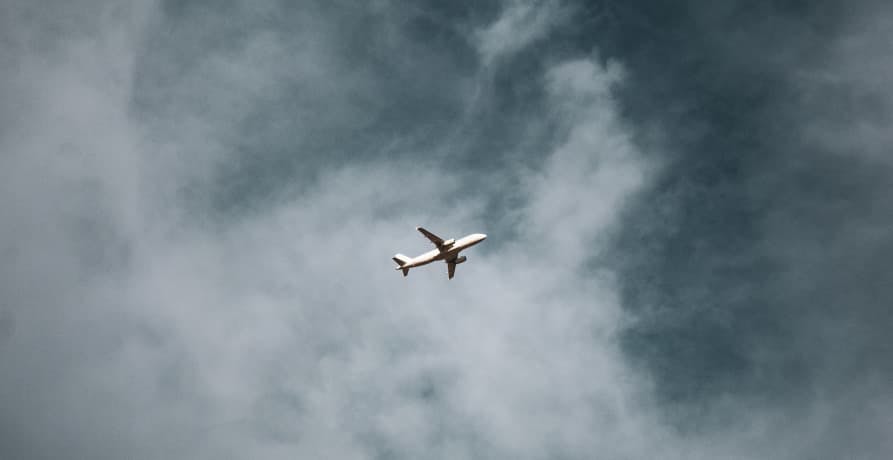
Sustainable Development Goals (SDGs): All You Need to Know
The United Nations has defined 17 goals, aimed at creating a better world. What are these so-called "Sustainable Development Goals" ? Explanations.
ESG / CSR
Industries



France’s recent ban on short haul flights has been hailed as a world first and an important step in the fight against climate change. However, the reduced scope of the ban has left many wondering if it will have much of an impact at all, with some critics calling it merely symbolic and accusing the French government of not going far enough.
👉 In this article we’ll explore what France’s short haul flight ban actually means, which flight routes are affected, and whether or not it will help cut down on carbon emissions.
On Tuesday May 23rd, France’s short haul flight ban came into effect by government decree, two years after lawmakers voted to introduce the ban.
The ban means that journeys that are possible in under two and a half hours by train, will no longer be possible by domestic flight within France (though connecting flights remain unaffected).
The move is part of an effort to cut down on carbon emissions and for the time being will mainly affect routes between Paris and regional hubs such as Nantes, Lyon and Bordeaux.
There are certain conditions that must be met for a route to be subject to the ban. The train services on the same route must be sufficient to satisfy the needs of passengers who would otherwise travel the route by air. This means that the trains must be frequent, timely, well-connected, and capable of absorbing the increased number of passengers.
Essentially passengers making the trip should be able to make the journey there and back within the same day, and with enough time to have spent 8 hours at their intended destination.

The short haul flight ban will only impact 3 routes for the time being - specifically the routes between Paris Orly airport and Nantes, Lyon, and Bordeaux.
The routes between Paris Charles de Gaulle and Lyon, and Lyon and Rennes are currently not impacted due to the fact that trains to the airports don’t offer services to passengers allowing them to arrive early in the morning or late in the evening, which means that the conditions of the ban are not currently met.
It’s possible however, that as rail services improve, that these routes fall under the scope of the ban.
👉 The ban doesn’t impact connecting flights. This means that if you were to take a flight from New York to Lyon, connecting through Paris, it would still be possible to take on an onward flight to Lyon from Paris. However, the number of flights offered on such routes are expected to reduce, so passengers may find themselves with longer layovers which might incentivise them to take the train anyway.

In 2019 the French Government created a citizens assembly made up of 150 randomly selected citizens. A political experiment that was designed to enlist the help of French citizens in cutting France’s carbon emissions, the ‘citizens convention on climate’ was established to advise the French Government on climate policy and action.
Over a period of 9 months, those selected were required to attend monthly meetings with French legislators, scientists, climate experts, and even with President Macron himself.
Tasked with helping the French government to cut the country’s carbon emissions by 40% by 2030 (compared to 1990 levels), the citizens came up with recommendations across the following areas: housing, consumption, production, work and travel.
One of the recommendations that the citizens assembly proposed was a ban on plane journeys where train journeys of under 4 hours were possible as an alternative. However, this was rebuffed by airlines such as AirFrance-KLM and some regional governments. The proposed ban was reduced to 2 and a half hours to satisfy these objections.

Flights produce greenhouse gasses through the burning of fuels - the primary driving force behind climate change. And although the aviation industry isn’t the largest contributor towards climate change it still contributes around 2% of the world’s global carbon emissions.
What’s more is that the aviation industry is set to grow - with passenger numbers doubling by 2037. This means that the aviation industry’s overall carbon footprint will increase unless something is done to curb emissions (check out our article on decarbonising the aviation industry to learn more about sustainable air travel).
👉 Did you know? Taking off uses more fuel than when a plane is cruising in the air, and for short flights this accounts for a large portion of their carbon emissions. This means that short haul air travel is less energy efficient than long haul air travel (per passenger, per km traveled) - in fact short haul flights account for a third of the aviation industry’s global greenhouse gas emissions.
France’s short haul flight ban has been hailed as “a major step forward in the policy of reducing greenhouse gas emissions’. But will the ban actually make a difference?
The biggest criticism of France’s ban on short haul domestic flights is that it only applies to three routes (Orly to Nantes, Lyon, or Bordeaux). This means that in reality the impact of the ban is relatively minor with only around 1 in 40 domestic flights being impacted. In fact, it’s estimated that the new ban will only reduce France’s aviation emissions by around 3%.
And while the ban has been touted as a “world first” and a "powerful message” by France’s transport minister, Clément Beaune, it’s come under fire from critics who point out that the initial ambitions of the ban have been scaled back to the point of being almost ineffective.
This has prompted many to call on the French government to increase the ban’s scope by banning plane routes where rail travel is possible in under 4 hours (as was initially proposed by the citizens assembly). This would mean that more flight routes are impacted by the ban - for example the Paris to Marseille route is a busy one, and the train journey takes just over 3 hours, meaning that it’s currently not within the scope of the ban, however, if the journey time of the ban was increased to 4 hours the route would fall under its scope.

The simple answer is that yes, usually the train is the more environmentally friendly form of transport. In fact it almost always comes out on top, especially when you compare it to air travel.
France in particular has a very energy efficient rail service, this is because the country’s electricity mix is one of the least carbon intensive in the world (equal to Norway, Switzerland and Sweden). Over 80% of France’s electricity is supplied by nuclear power or hydro sources.
👉 On average the plans is responsible for 77 times more CO2 per passenger than the train on the impacted routes in France.

Even though the direct impact of France’s travel ban on greenhouse gas emissions is relatively minor, it may actually prove to be a useful tool for change. It’s hoped that the ban will make people stop and consider the environmental impact of their travel, and to prompt people to take the train instead of opting to fly.
Not only this, at the very minimum it’s a step in the right direction, and paves the way for the French government to take further actions to cut down on the transport sector’s emissions. Whether this is by expanding the scope of the short haul flight ban, or through other policy measures that aim to reduce carbon emissions.

At Greenly we can help you to assess your company’s carbon footprint, and then give you the tools you need to cut down on emissions. Why not request a free demo with one of our experts - no obligation or commitment required.
If reading this article has inspired you to consider your company’s own carbon footprint, Greenly can help. Learn more about Greenly’s carbon management platform here.